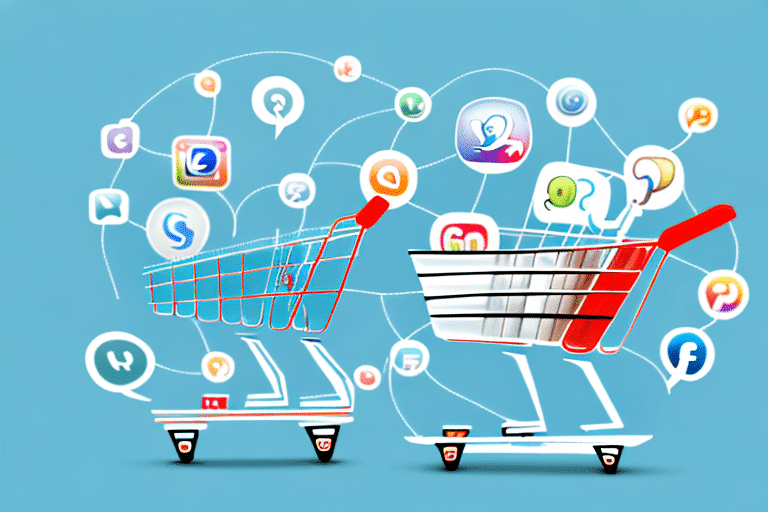Understanding Social Media Engagement Rate for E-commerce
Social media has become an indispensable tool for e-commerce businesses aiming to connect with potential customers and drive sales. However, simply posting content is not enough to foster meaningful interactions and attract consumers. This is where the social media engagement rate comes into play—a key metric that gauges the level of interaction your business receives from its social media content. In this article, we will delve into the significance of social media engagement rate for e-commerce, methods to measure it, and effective strategies to enhance it, ultimately driving substantial growth for your online store.
Measuring Social Media Engagement Rate: Metrics and Tools
Key Engagement Metrics
To accurately measure your social media engagement rate, consider the following primary metrics:
- Likes: The number of users who clicked the "like" button on your content.
- Comments: The number of users who commented on your posts.
- Shares: The number of times your content has been shared by users.
- Reactions: The variety of reactions (e.g., love, haha, wow) users can express on your content.
Engagement rate is typically calculated as a percentage by dividing the total number of engagements by the total number of followers. For example, if you have 1,000 followers and receive 150 engagements on a post, your engagement rate is 15%.
Additional Metrics for Comprehensive Analysis
Beyond the primary metrics, the following can provide deeper insights into your engagement rate:
- Click-through Rate (CTR): Measures the percentage of users who clicked on a link within your post.
- Impressions: The total number of times your content was displayed.
- Views: The number of times your video content was viewed.
- Follower Growth: The number of new followers gained or lost over a specific period.
Tracking these additional metrics can offer a more nuanced understanding of your audience's behavior and preferences.
Tools for Tracking Engagement Rate
Several tools can help you monitor and analyze your social media engagement rates effectively:
These tools provide comprehensive data on various engagement metrics, enabling you to make informed decisions about your social media strategies.
Strategies to Improve Social Media Engagement Rate
Content Creation: Quality and Relevance
Invest in creating high-quality, visually appealing content that resonates with your target audience. Use a mix of images, videos, infographics, and articles to keep your content diverse and engaging.
Consistent Posting with a Defined Strategy
Maintain a consistent posting schedule aligned with a well-defined content strategy. Regular updates keep your audience engaged and informed about your latest offerings.
Effective Use of Hashtags and Tags
Incorporate relevant hashtags and tags to increase the visibility of your content. This practice helps in reaching a broader audience and attracting potential followers interested in your niche.
Engaging with Your Audience
Actively interact with your audience by responding to comments, liking their posts, and sharing user-generated content. Building a two-way communication channel fosters a loyal community around your brand.
Contests and Promotions
Run contests and promotions to incentivize your followers to engage with your content. These activities not only boost engagement rates but also increase brand awareness and customer acquisition.
Influencer Collaborations
Partner with influencers who align with your brand values and have a substantial following. Influencers can create authentic content that resonates with their audience, driving higher engagement rates for your brand.
User-Generated Content
Encourage your customers to create and share content featuring your products or services. User-generated content adds authenticity to your brand and increases engagement by showcasing real customer experiences.
Analyzing Competition and Industry Benchmarks
Competitor Analysis Tools
Utilize tools like Sprout Social and Hootsuite to monitor your competitors' social media performance. Understanding their engagement rates and strategies can provide valuable insights for your own marketing efforts.
Content Strategy Insights from Competitors
Examine the types of content your competitors are posting. Identify which formats (images, videos, stories) and topics garner the most engagement. Use these insights to refine your own content strategy and identify opportunities to differentiate your brand.
The Link Between Engagement Rate and Sales
A high social media engagement rate is closely linked to increased sales for e-commerce businesses. Engaged audiences are more likely to trust your brand, leading to higher conversion rates. Studies have shown that actively engaging with customers on social media can significantly influence purchasing decisions (Source).
Moreover, engagement fosters customer loyalty, encouraging repeat purchases and long-term brand advocacy. By analyzing which engagement types lead to conversions, businesses can tailor their strategies to focus on high-impact interactions.
Common Mistakes in Measuring Engagement Rate
To ensure accurate measurement of your social media engagement rate, avoid the following common pitfalls:
- Focusing on Vanity Metrics: Prioritize engagement rates over simply increasing follower counts. Metrics like likes and shares are more indicative of genuine interaction.
- Inconsistent Platform Comparison: Do not compare engagement rates across different social media platforms without considering their unique audience behaviors and demographics.
- Ignoring Industry Benchmarks: Compare your engagement rates against industry standards or competitors to gain a realistic perspective of your performance.
Case Studies: Successful E-commerce Brands
Examining successful e-commerce brands can provide actionable insights into effective social media strategies. For example, Glossier, a beauty brand, leverages customer reviews and testimonials to create authentic and relatable content, resulting in high engagement rates. Similarly, Ugly Drinks, a beverage company, effectively used hashtag campaigns to encourage user participation, significantly boosting their social media interactions.
These brands demonstrate the power of authentic content and strategic engagement in building a loyal customer base and driving sales through social media.
Conclusion
The social media engagement rate is a vital metric for e-commerce businesses seeking to understand their brand's performance and customer interactions. By accurately measuring and analyzing this rate, businesses can refine their social media strategies, identify strengths and weaknesses, and seize opportunities for growth. Implementing strategies such as influencer marketing, user-generated content, and high-quality visual content can significantly enhance engagement rates, drive traffic to your online store, and ultimately boost sales.




















